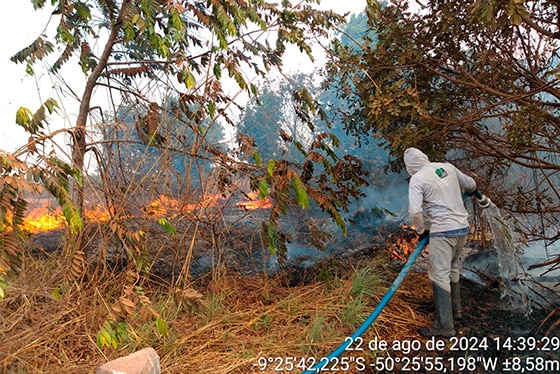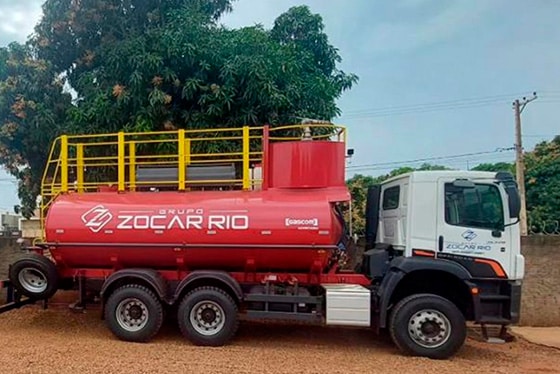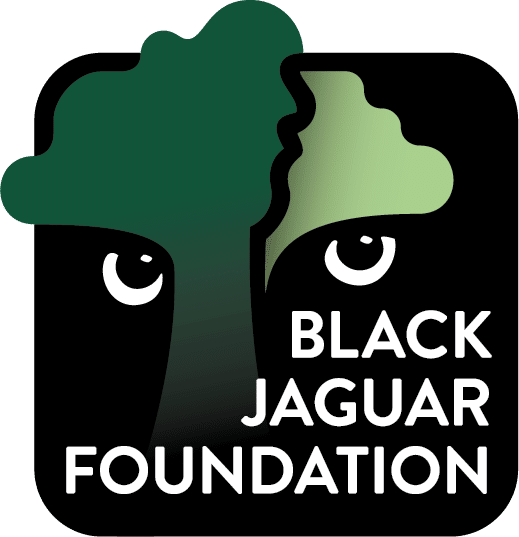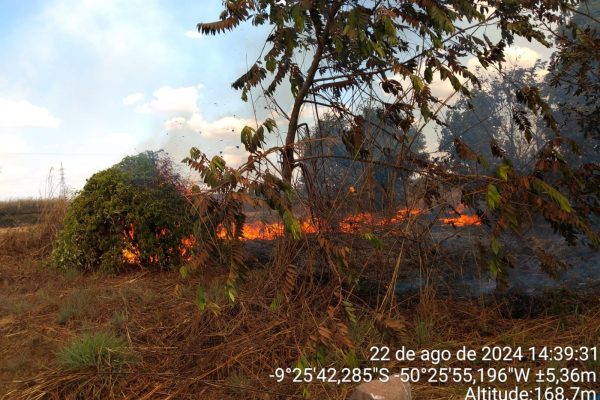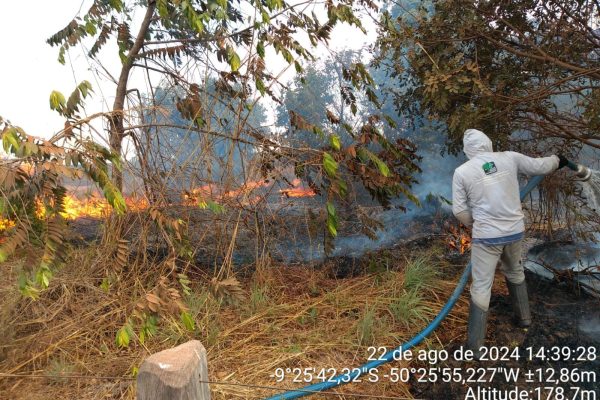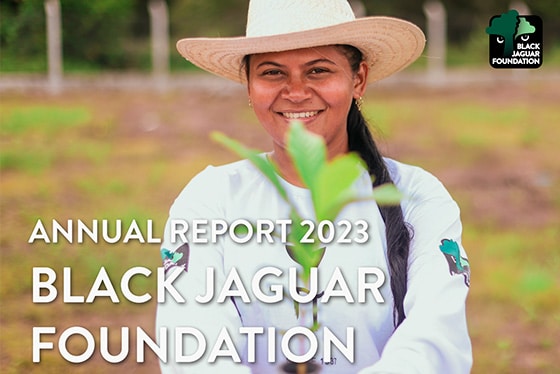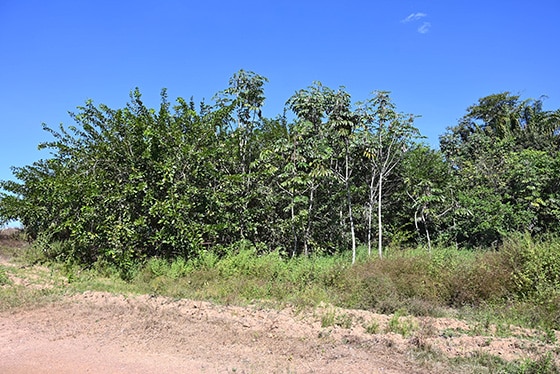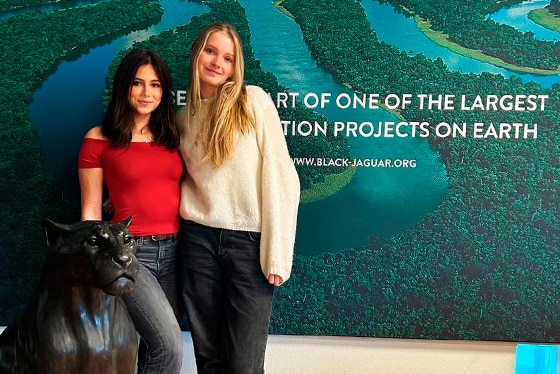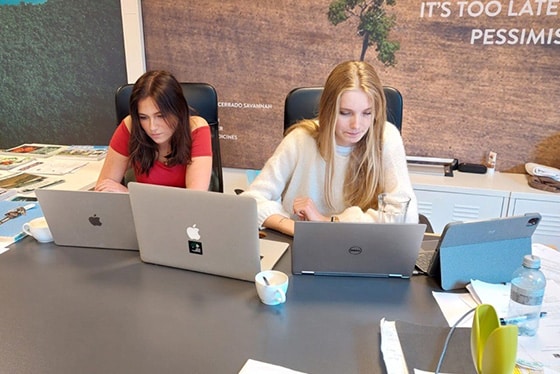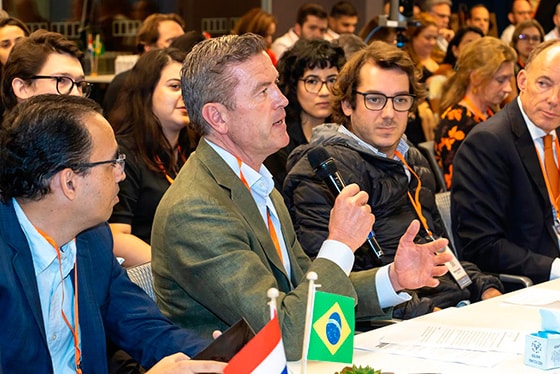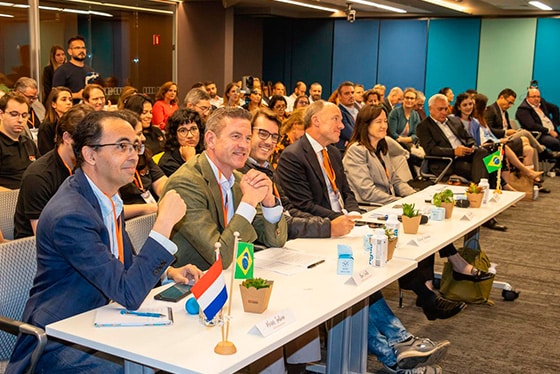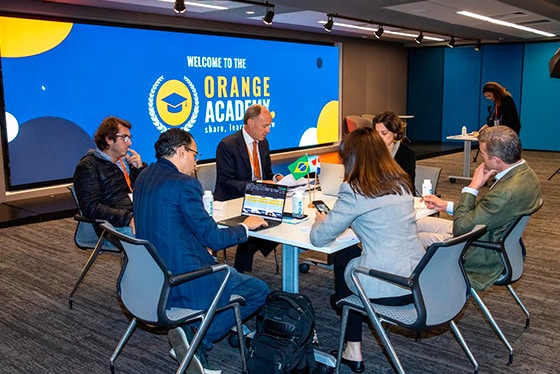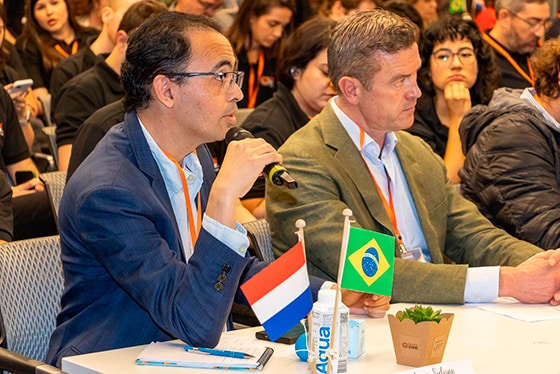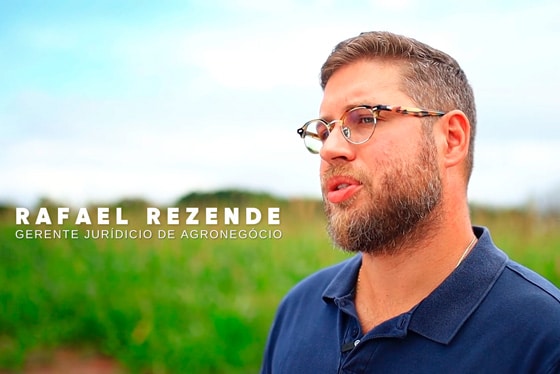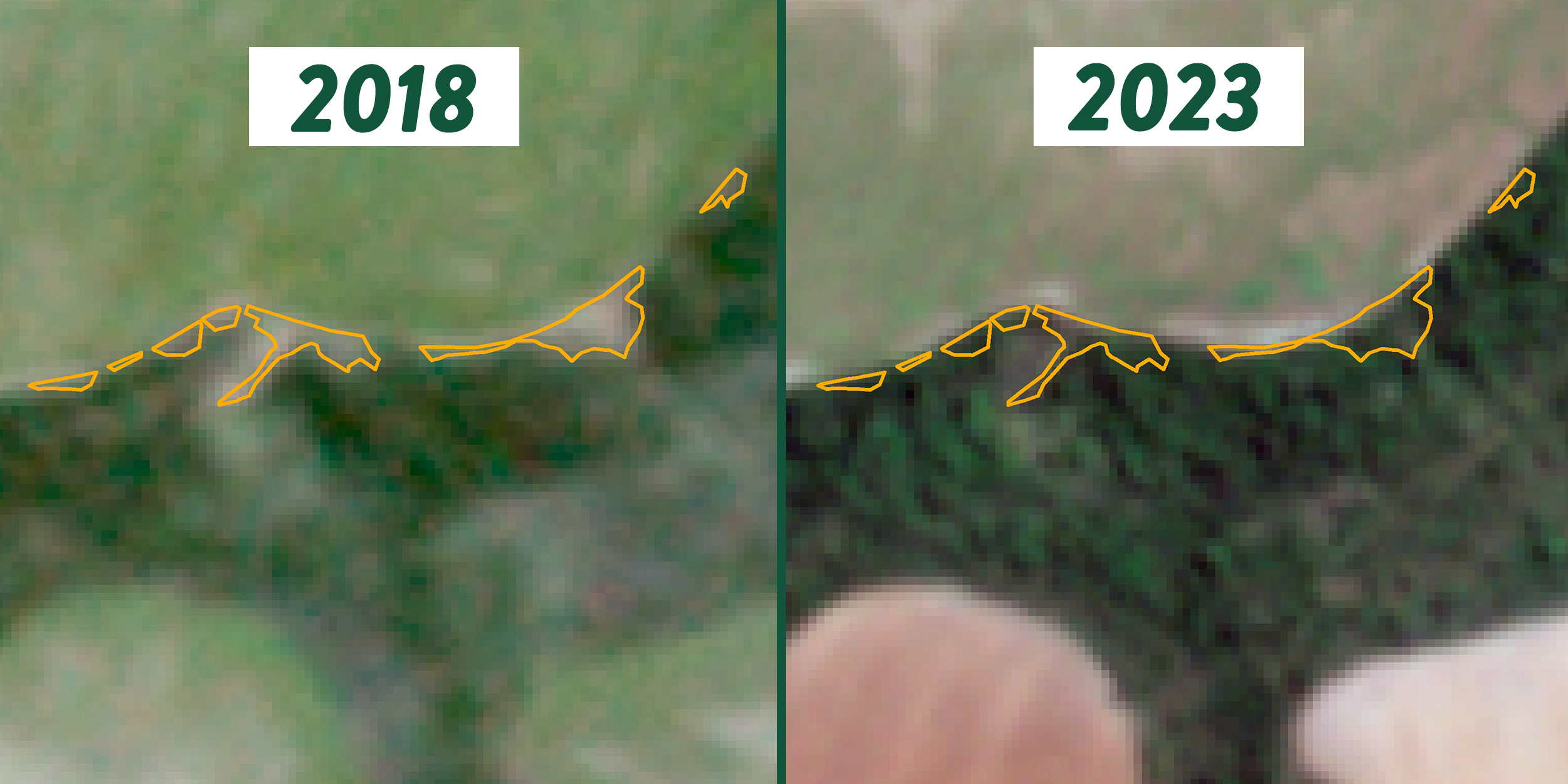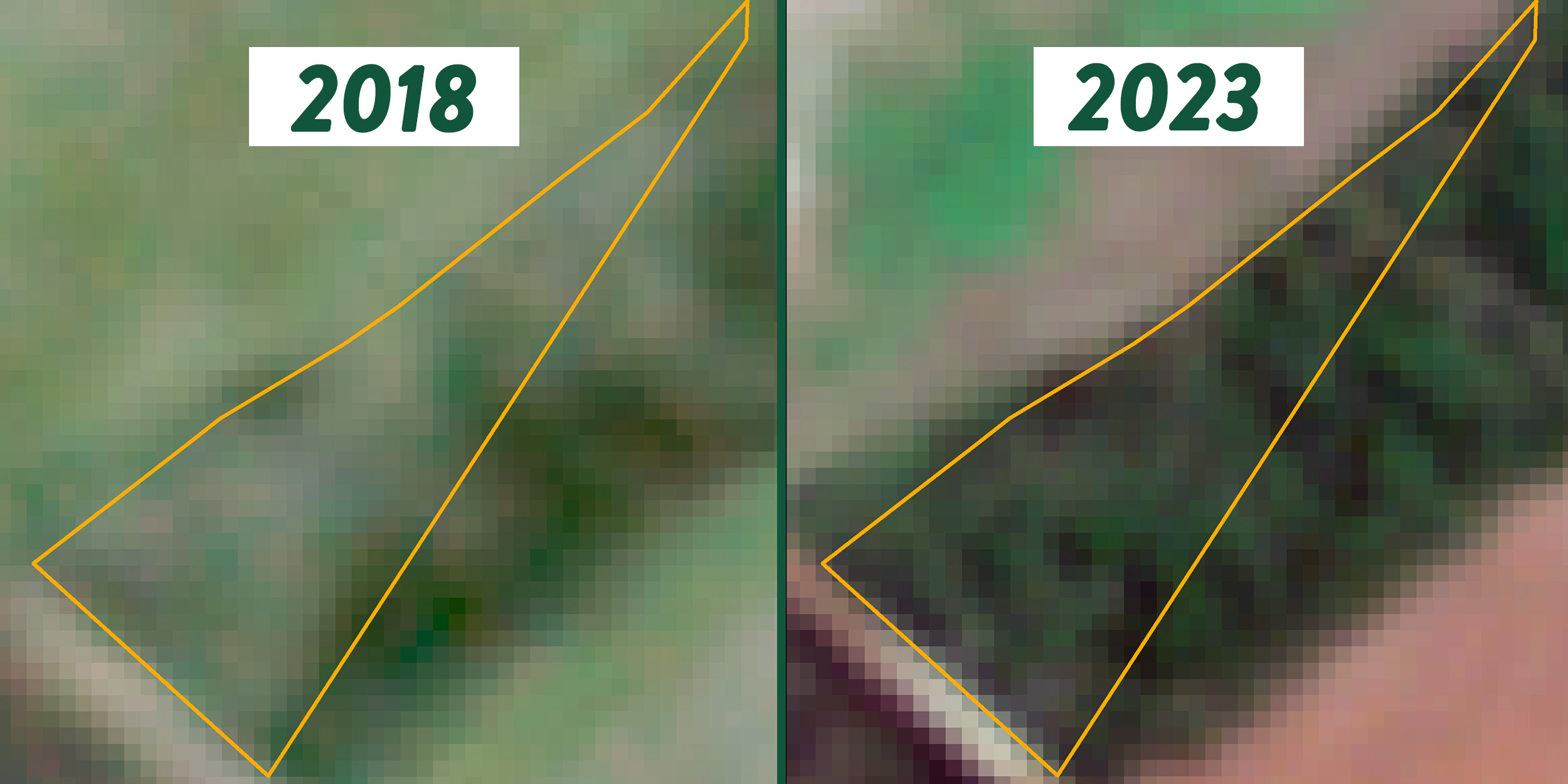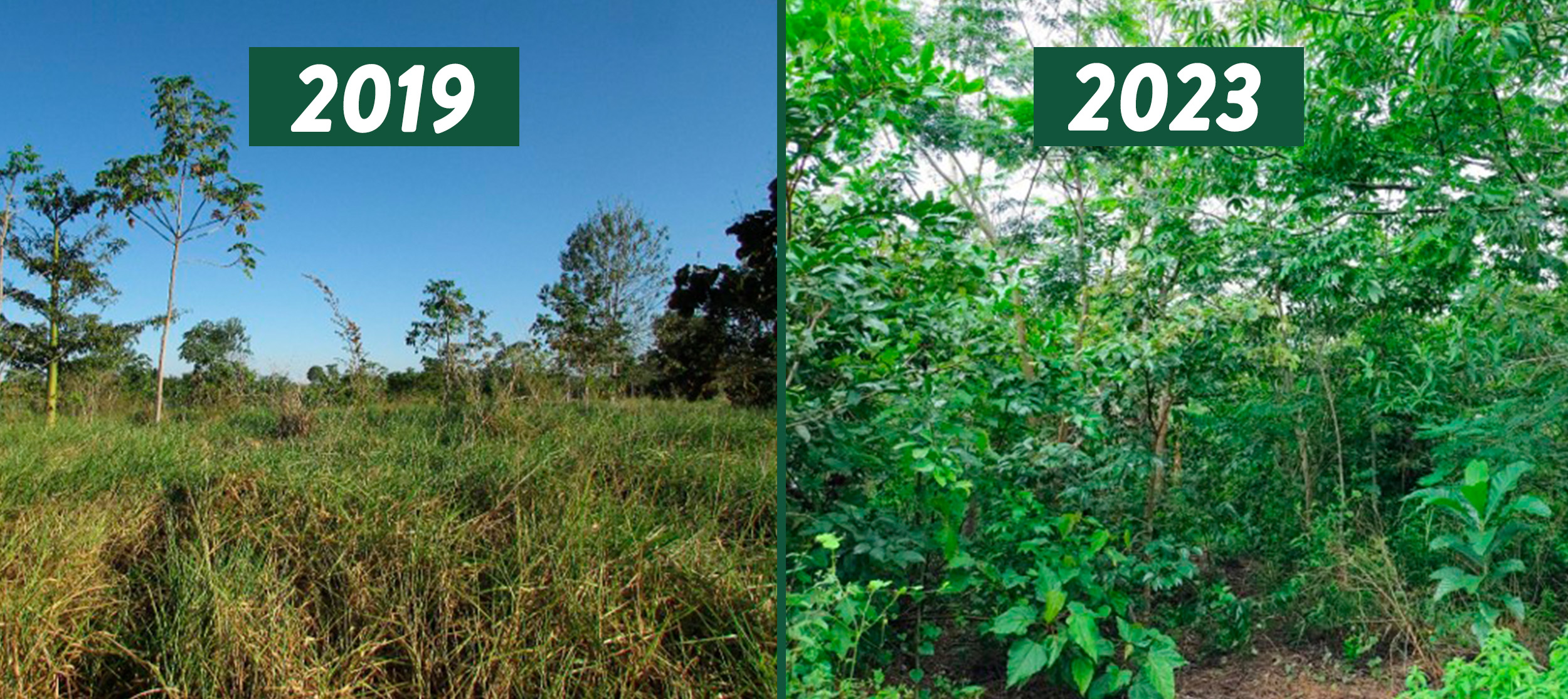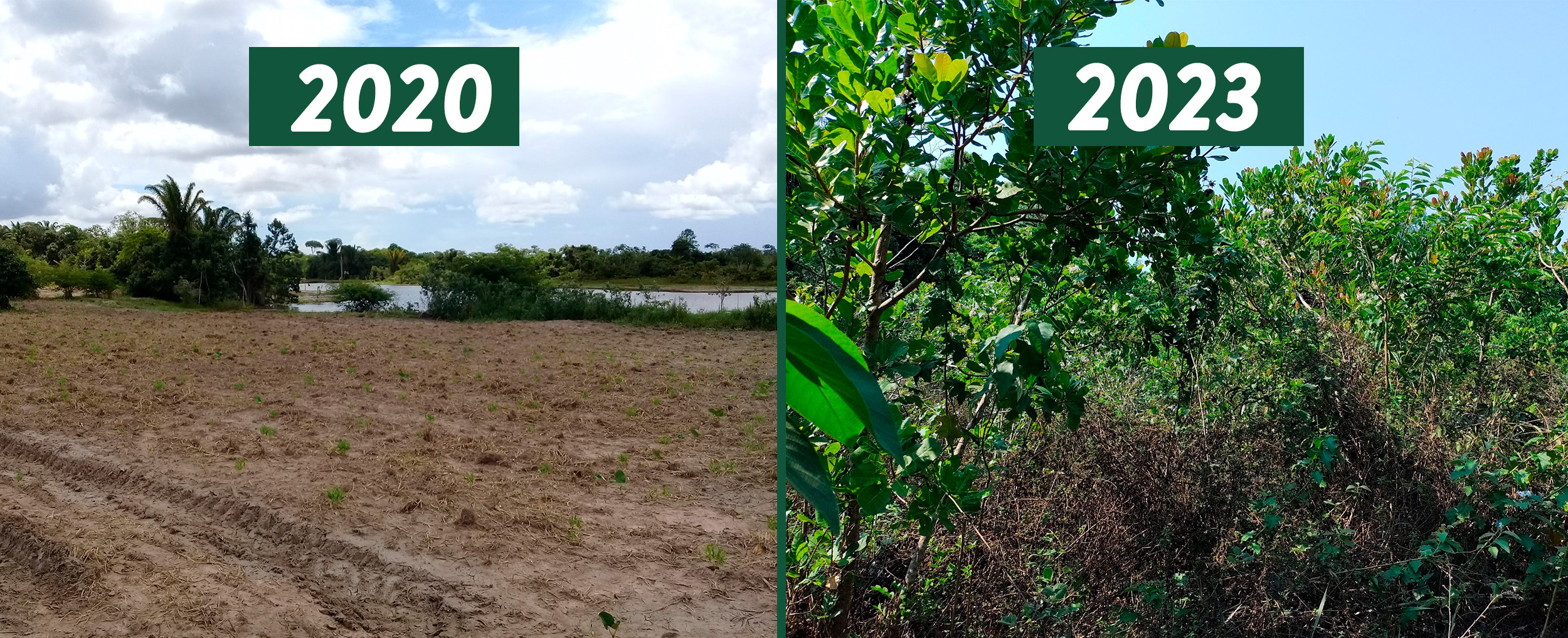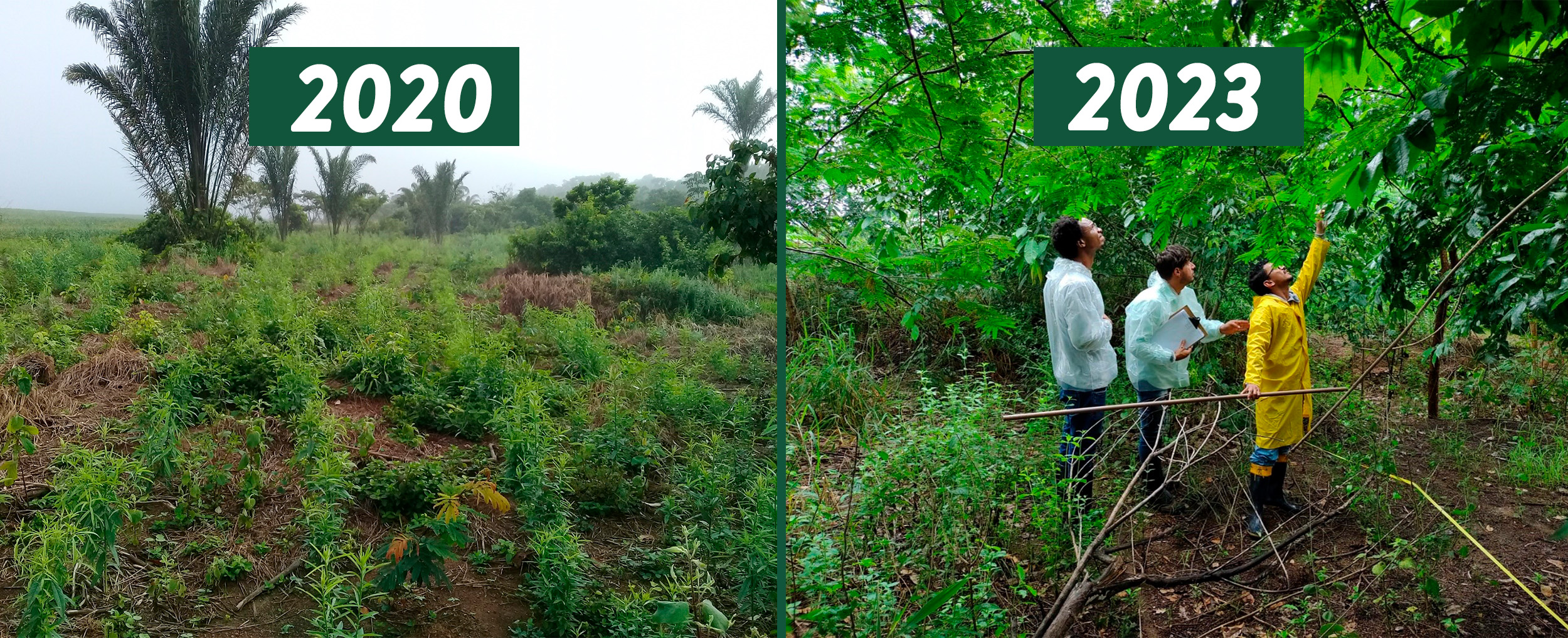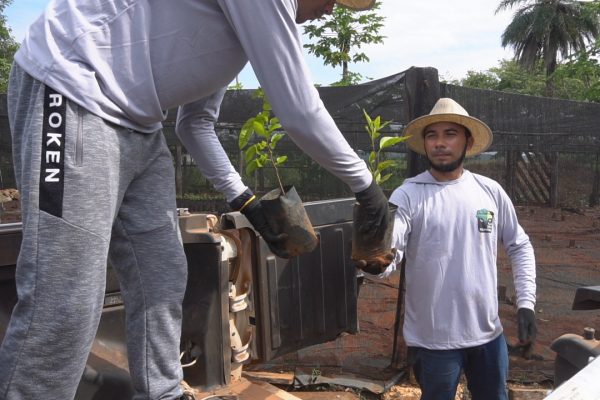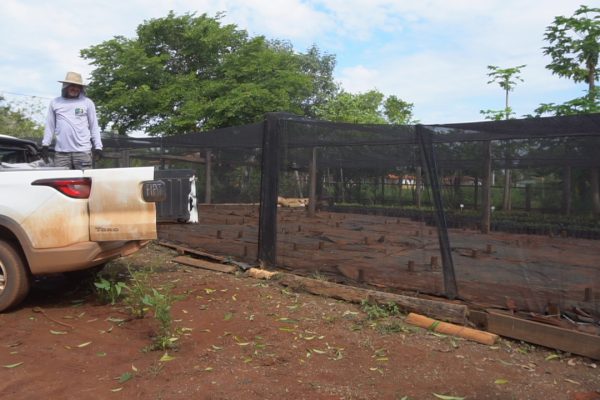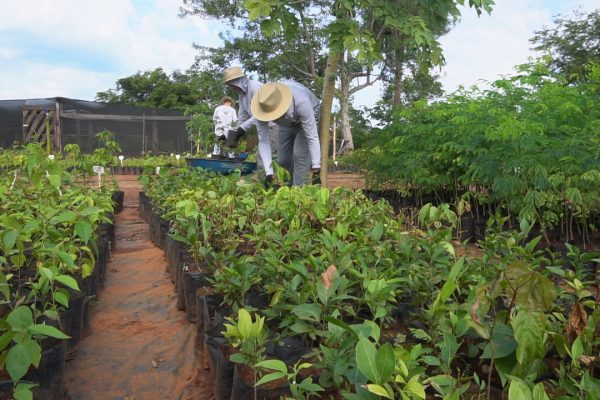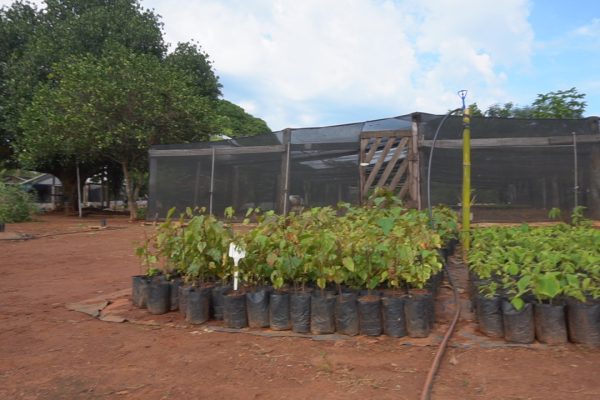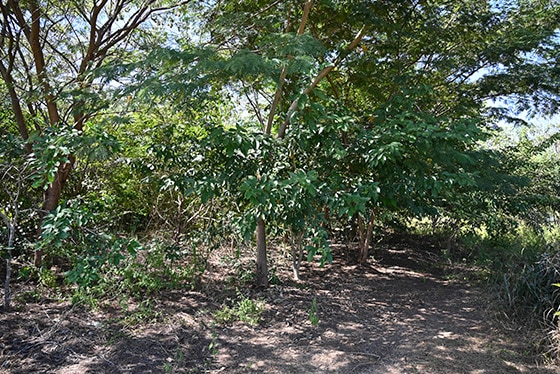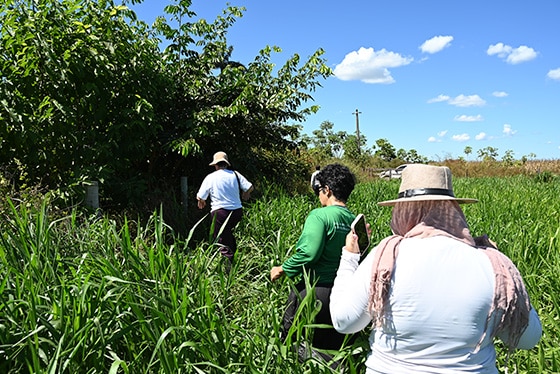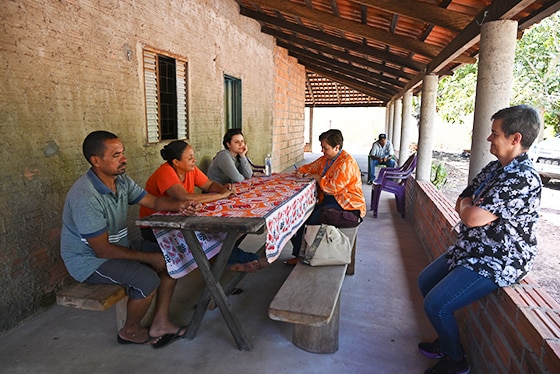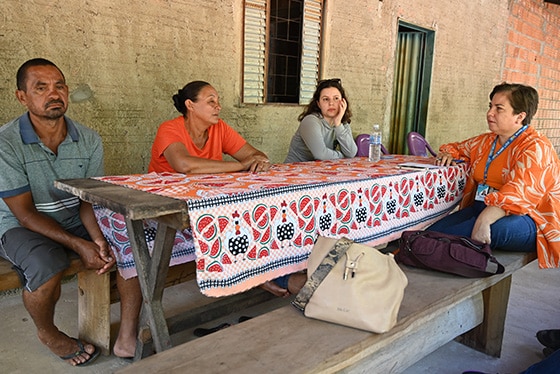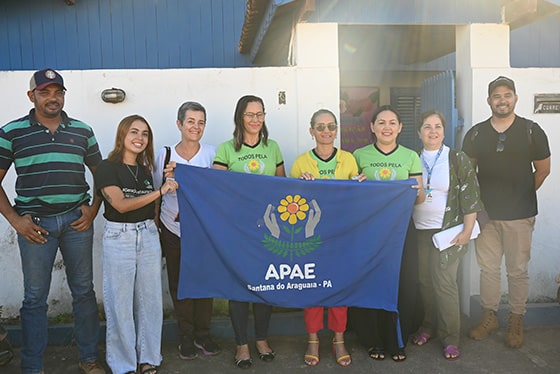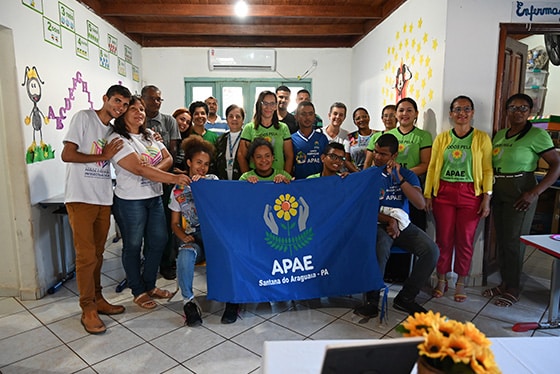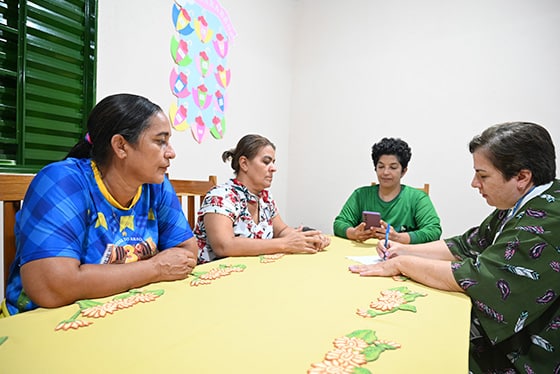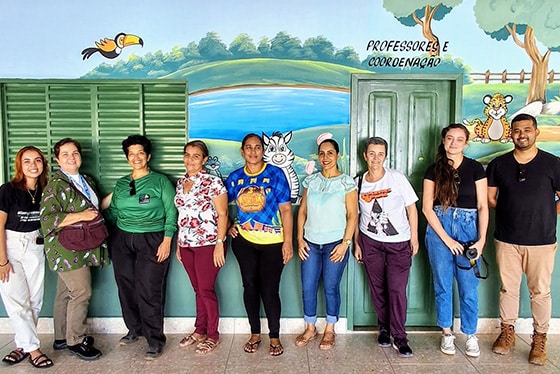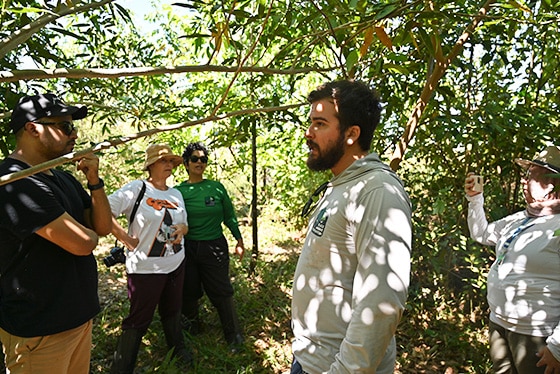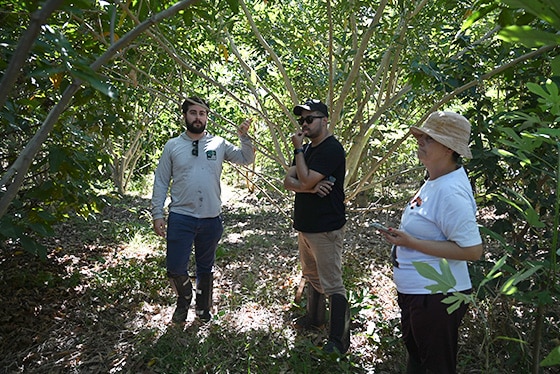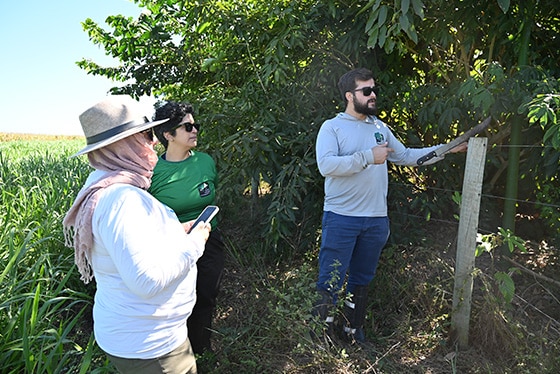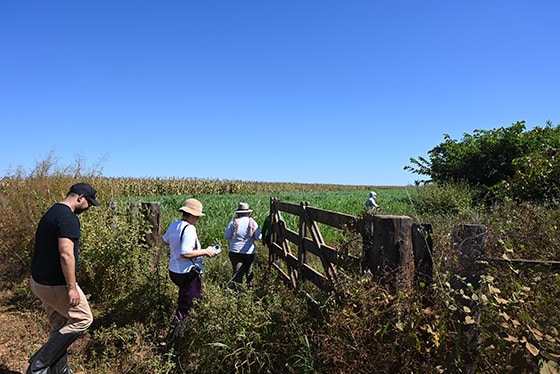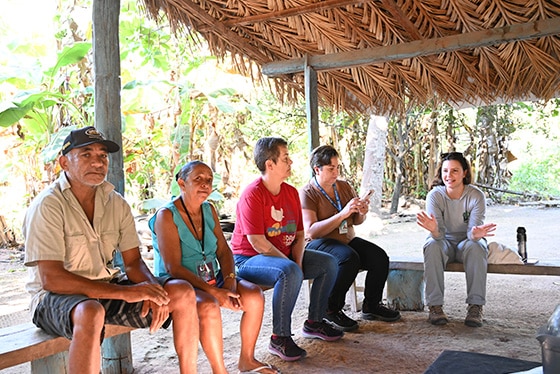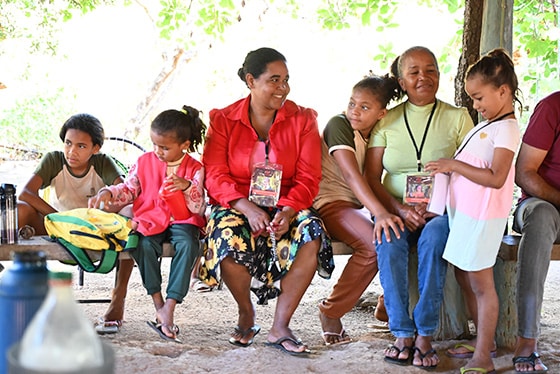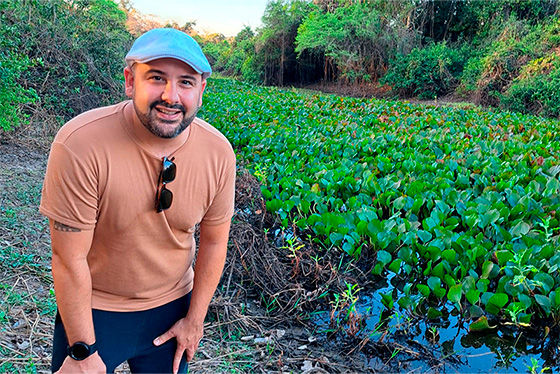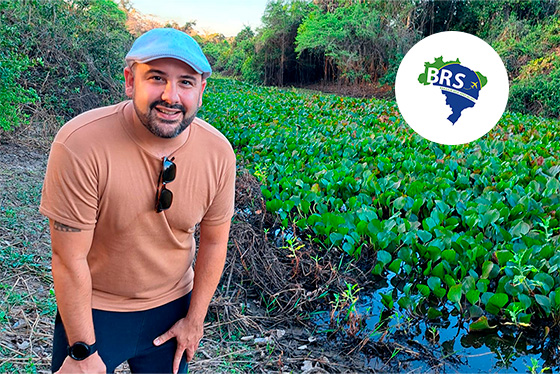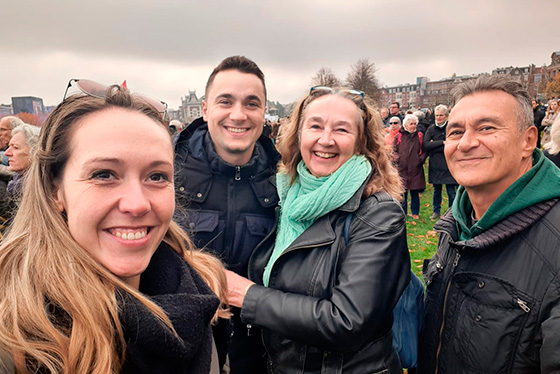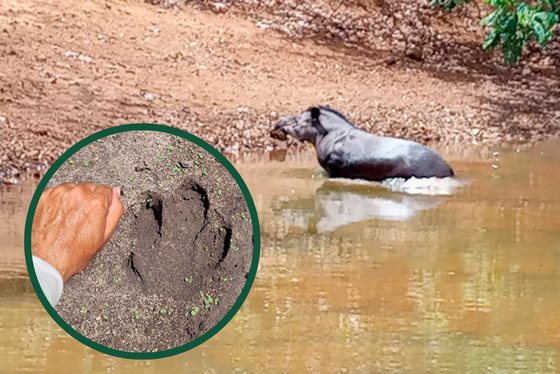The technical team from Caixa Federal Bank’s Socio-Environmental Fund, visited the Araguaia Biodiversity Corridor to witness the transformative impact of the work we are conducting in the region!
During the visit, the team met with our collectors from Ressemear (Araguaia Seed Network), visited schools where we conduct environmental classes, and toured the restoration areas from previous planting seasons. We would like to thank Glauciane Verdolim and Denise de Souza dos Santos for their visit and support to our project! Together we are planting and growing 1 million native trees.
Visit to rural settlements and exchange of experiences with Ressemear’s collectors
We began in Caseara (Tocantins), visiting the Onalício Barros settlement. There, our partners had the opportunity to speak with Maria do Socorro and Janderlan, a collector couple from Ressemear (Araguaia Seed Network), witnessing firsthand the crucial role of Black Jaguar Foundation in environmental education and in generating income and opportunities for local communities.
Environmental education activities in Santana do Araguaia
Next, in Santana do Araguaia (PA), our visitors accompanied us to the local APAE (Association of Parents and Friends of the Exceptional). This year, we conducted an environmental education event on Earth Day, where children had the chance to plant native trees.
We then visited the D. Elisa Infant School, where we celebrated Water and Forest Day with lectures and distribution of native seeds to 460 children aged 4 to 6.
The ecological restoration cycle
Still in Santana do Araguaia, we visited a restoration area that is 2 years old. There, our visitors witnessed the direct results of the restoration cycle in a permanent preservation area by a reservoir, where a well-established restoration is already apparent.
The day concluded with a visit to the Black Jaguar Foundation Nursery, where Norivânia Diniz, seedling production analyst, explained the germination and production processes of thousands of native seedlings for the upcoming planting season.
Roundtable discussion with seed collectors in Barreira do Campo
The last day of the visit was dedicated to a roundtable discussion with seed collectors in the riverside region of Barreira do Campo, along the banks of the Araguaia River. Eunice, Pedro Gomes, Creusa Guevara, her daughter Andreia, Aldeir Dias, and eight other collectors shared their experiences, challenges, and achievements in the seed network.
Eunice and Creusa shared their experiences since the inception of the collection group, emphasizing the importance of expanding the customer base and seed demand to ensure collectors’ income. Aldeir, meanwhile, recounted his journey of overcoming health issues and his new role in the group, overseeing negotiations with external buyers and other partners.
Inspiring and Transformative Stories
Throughout the week, Caixa’s visitors and the Black Jaguar Foundation team had the opportunity to witness firsthand the transformation that ecological restoration work brings to the Araguaia region.
The stories of seed collectors, beneficiaries of environmental education actions, and community leaders served as inspiration and reinforced the organization’s commitment to environmental preservation and social development.
The Black Jaguar Foundation team extends heartfelt thanks to all who contribute to the success of restoration efforts, especially to Caixa’s Socio-Environmental Fund for their support of our mission in the Araguaia Biodiversity Corridor, and to the communities of Araguaia for their warm welcome and the opportunity to share their stories.
